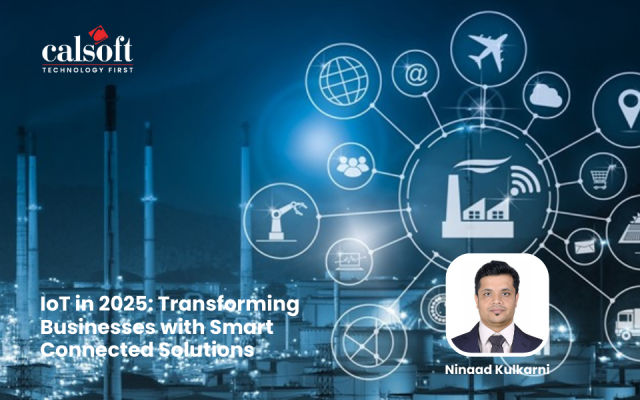The Internet of Things (IoT) had a very interesting start. Kevin Ashton, who is known as the father of IoT, was working with Procter & Gamble. It all started when a preferred color of Olay lipstick was recurrently out of stock. As a brand manager, he was thinking about a solution for this problem. During his investigation, he went through the supply chain data and found some loopholes in it, which eventually encouraged him to drive RFID chips. He then encouraged the Massachusetts Institute of Technology (MIT) to come up with an auto-ID center that does research on RFID technology. During this process, Ashton coined the term ‘Internet of Things’ when he was interacting with less tech-savvy people for RFID.
In the current situation, organizations and people are adopting IoT devices and the associated technology faster than ever. This year, an estimated 21 billion devices are expected to be connected to IoT. As we are already stepping into the future, we can sense how everyday objects are a part of the IoT ecosystem. And Machine Learning and Artificial Intelligence just making it smarter by the day.
In India, currently, the focus is on the cities that are transforming into smart cities with the help of IoT. Imagine smart traffic lights that collect the data and sync lights at the peak of traffic. With people rapidly migrating to metropolitan areas, it has been estimated that by the end of the year 2032, around 61% of the world’s population will be in these areas. With such a huge population, only IoT can help in the efficient working of the cities, which will also help in saving the government money, as most of the things will be remotely managed.
The following graph states a very interesting story. It predicts that the usage of IoT devices will be 30 billion and above in the coming future, which is almost 4 times more than the total population of the world, which is 7.7 billion! Companies that are working in IoT and cloud computing—such as Azure, Microsoft, Amazon—have seen a tremendous increase in their sales and revenue in this field.

One of the industries that is going to largely apply IoT in recent years is the automobile industry. By this year, predictions had stated that 90% of automobiles will be Internet dependent. Imagine yourself sitting in a car without a driver, which is driving you towards your destination. Whether you like it or not, autonomous vehicles are coming. According to PWC estimates, in 2015, the automobile industry had spent around $46 billion on the research and development of self-driving cars.
In fact, almost 127 devices are connected to the Internet every second! This was been estimated by a research carried out by former Cisco researcher, David Evans. He stated that “Today, literally anything can be connected, including tennis rackets, diapers, clothing, vehicles, and homes. The network is also starting to include biological things: today, pets, crops, livestock, and the clothing on your body can be connected. We’re not far from an Internet link you can actually swallow as a pill.”
With all the benefits of IoT, there are also threats, one of which is—the potential security risk as each device is a different vector for hackers to attack. Hence, companies need to be more diligent in managing access.
The enormous demand and acceptance of IoT in everyday devices has led experts to predict that companies are likely to invest up to $15 Trillion in the technology by 2025. With the enormous capital pouring in, the market size of IoT will look very different from that of today. As data plays a pivotal role, colocation data centers will continue to play a vital role in IT solutions for organizations that are striving to scale their operations to make way for IoT.
The Healthcare domain is one of the most exciting areas where IoT is expected to make a huge mark. Globally, the IoT Healthcare market is expected to reach $140 Billion by 2024 as telemedicine and wearable sensors are helping medical professionals to treat and monitor patients more efficiently. Although because of the norms stated by HIPAA/HITECH, some areas of Healthcare can face challenges, a strengthened security stance of IoT can help the technology to easily and safely integrate into this area in the coming years.
The other domain that is predicted to benefit from IoT is the Manufacturing sector. While smart kitchens and self-driving cars have become the face of IoT, some of the most exciting and unique innovations are taking place in this domain. From machines that can automatically perform crucial tasks to some augmented wearables that can allow employers to work safely and more efficiently – these have a lot of scope in manufacturing. Data gathered by IoT will also help improve maintenance and productivity along with optimum efficiency. Around 80% of the manufacturing companies are either using or are at least planning to use IoT devices worldwide. This is also true for retailers, which are and which will continue to use IoT for streamlining their repository and maximizing customer buying satisfaction.
Due to the large-scale deployments in China, north-east Asia is predicted to account for 2.2 Billion out of 3.5 Billion in cellular IoT connections in 2023.

IoT seems to be one of the fastest growing technologies in nearly every field and it will be interesting as well as safe to explore the aspects of this technology, which is predicted to grow and generate tremendous revenue.






